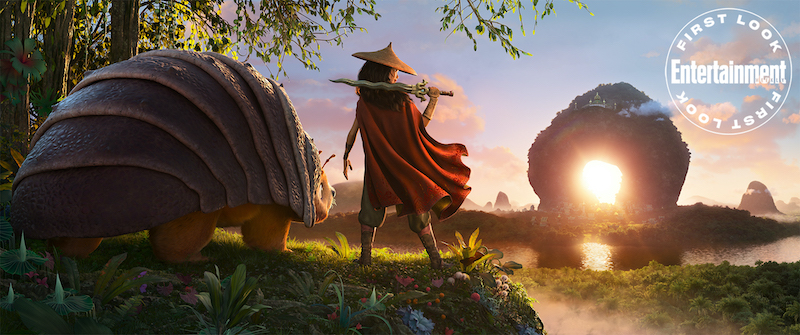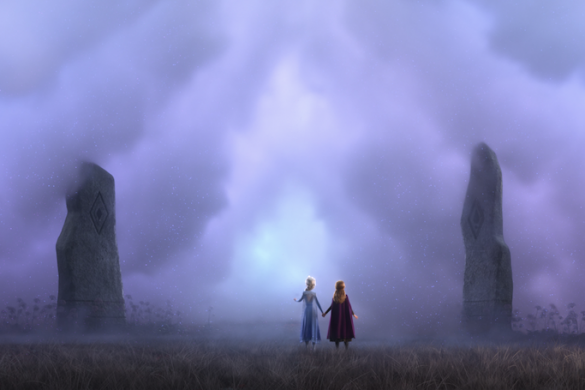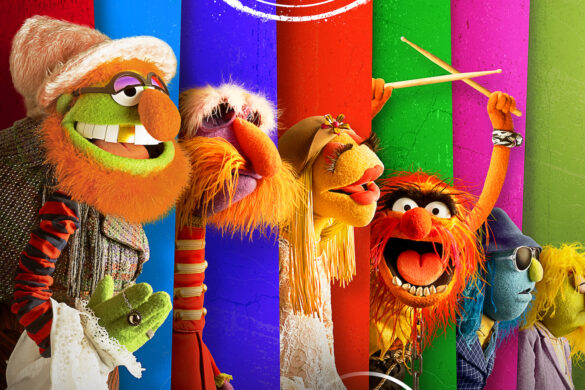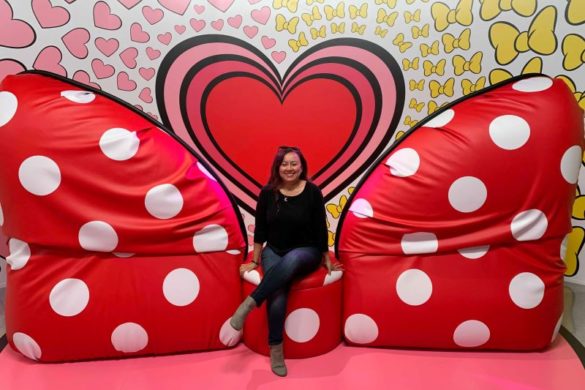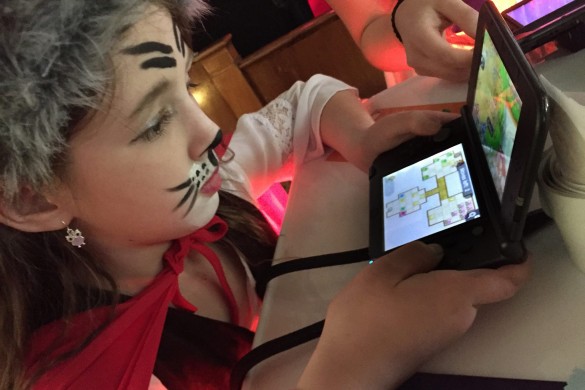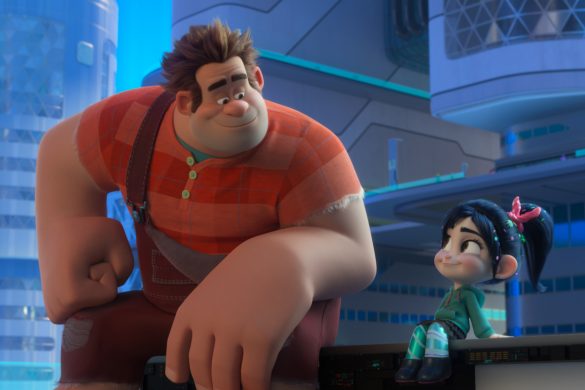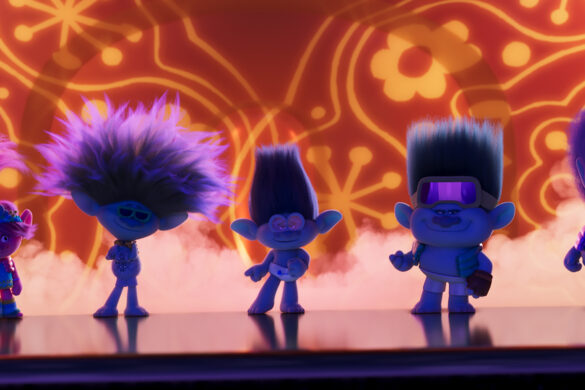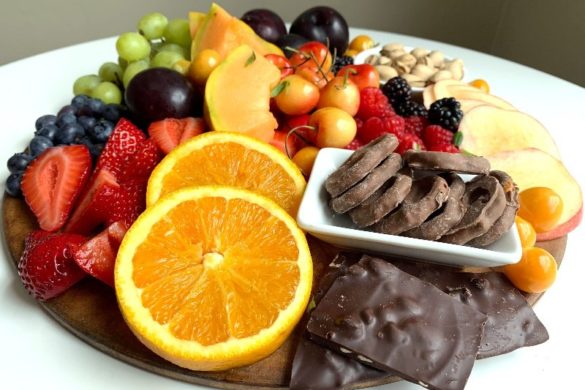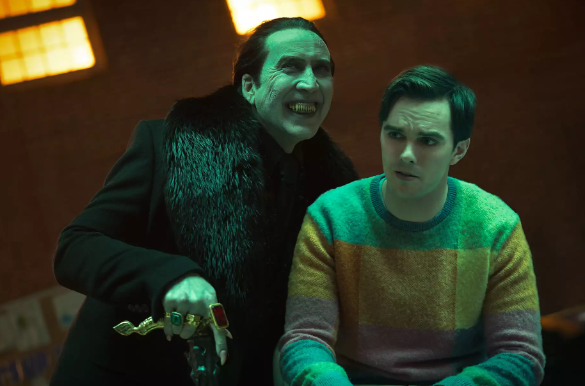Theme of Trust Extends To The Real World
In More Ways Than One
They say that art is a reflection of society or the times. In many ways, that is true for a film like Walt Disney Animation Studios’ “Raya and the Last Dragon,” where trust is the story’s central theme. The film asks, how do you find trust when the world around you is broken and come together for the greater good? While our title character searches for that answer on her quest to find the last dragon to stop the evil Druun monsters for good, it was also a question that the cast and crew found themselves asking as the Covid-19 pandemic forced everyone to work remotely.
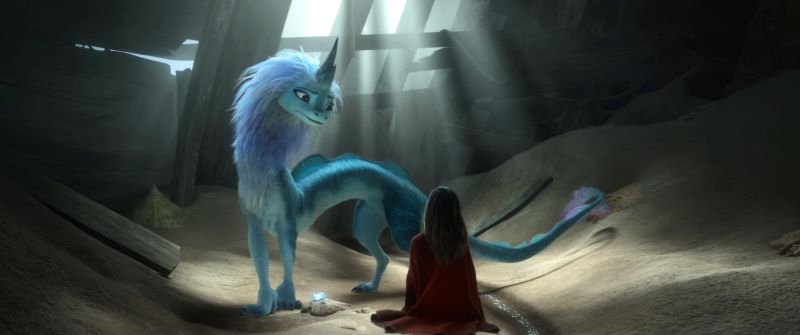
In the film, the once peaceful land of Kumandra is overrun by the evil Druun, a mindless plague that spreads like wildfire and turning the humans they touch into stone. The mighty dragon Sisu (Awkwafina) put all her magic into the dragon gem to blast the Druun away. While humanity was restored, the dragons did not return. As a result, borders were created, and Kumandra divided into five lands that represented the dragon. Heart, Tail, Talon, Spine, and Fang were all connected by the dragon river.
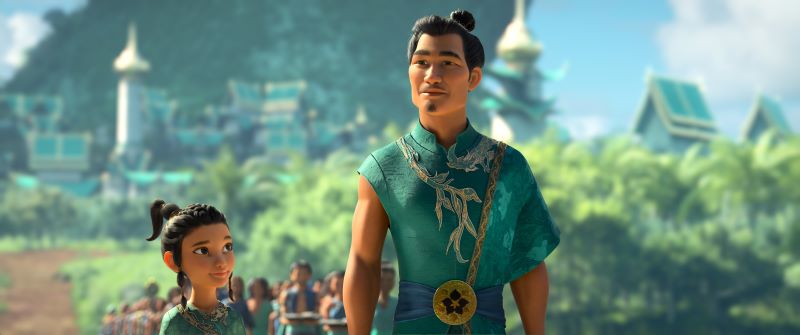
Chief Benja (Daniel Dae Kim) and his daughter Raya (Kelly Marie Tran) sought to bring peace to their fractured world by uniting the five nations as one. But on a day that had so much promise to get these five nations together, they are betrayed, and the gem shatters into pieces releasing the Druun, who then starts turning people into stone once more just as it did 500 years ago.
Years later, Raya, a lonesome hardened warrior, embarks on a quest to collect the stones and revive Sisu in hopes that she can get rid of the Druun and restore humanity. During their quest to gather all the five gem pieces, Raya’s nemesis Namari (Gemma Chan) and her armed forces chase Raya and Sisu across the lands. On this quest, Raya must learn to work together with Sisu as well as a ragtag group of sketchy characters they meet along the way an entrepreneur named Boun (Izaac Wang), a con baby named Noi (Thalia Tran) and her band of troublemaking monkeys known as Ongis, and a fearsome warrior named Tong (Benedict Wong).
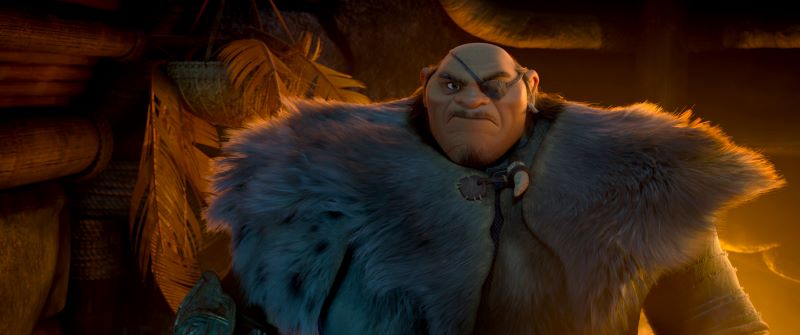
They have to learn how to trust each other if they want the chance to unite this divided world.
Though “Raya and the Last Dragon” is a story driven film, a theme of trust resonated with the cast and crew because it was a reflection of the state of the world. Seeing the news and how social media created these divides, it helped shape the film’s story.
As they were developing “Raya and the Last Dragon,” co-director Paul Briggs saw the similarities between the state of the world and the film’s setting, Kumandra, a fantastical world divided into five nations based on parts of the dragon. “I started looking around at our own world and our own country. There was a lot of fracturing and division,” he said. “I remember my two little boys asking questions about it. As a parent and as a father, it really affected me. And I started asking myself, ‘how can I give them hope for a better future?’ ‘How do I leave this world a better place than I entered it?'” These helped spark story ideas of Raya’s quest to restore the fractured lands of Kumandra. But as she will soon realize, it’s going to take more than just finding a dragon. It’s going to take trust.
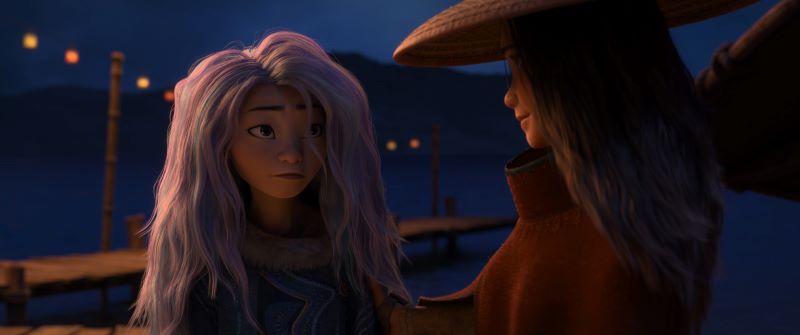
The theme of trust started to take shape during one of the creative team’s research trips to Southeast Asia. “The biggest takeaway of the research trip is a sense of community,” Fawn Veersaunthorn said. She recalled how co-director John Ripa was so moved by witnessing locals coming together to give monks sticky rice. It’s that sense of coming together for a greater good that plays into the theme of trust that builds the community.
“We had no real way of knowing that during the making of the film that our own world was going to be put under an incredible amount of existential pressure with the pandemic,” director Don Hall said. “It came by surprise with all of us. But how the film kind of mirrors our own experiences in the real world right now has been nothing short of extraordinary.”
In early March 2020, the team began working from home due to the Covid-19 pandemic. Making an animated film is one of the most collaborative processes in the world, and so much of that process involves close collaboration together in the same space. That doesn’t mean just being in the same room for creative meetings. These collaborations happen during hallway conversations, coffee breaks, and more.
Animators, directors, writers, producers, and the voice cast found themselves working together but separately to make the film the best it can be. This proved to be a bit of a challenge since working at home is not even close to being the same as working in the same building. However, they are able to pull together in the face of looming deadlines, story changes, and building renovations with the shared goal of telling a great story. “Our collaborative spirit has never been tested as it has been in the last year,” director Don Hall said. “We came closest together while being further apart.”
Though Hall wishes that this would be a theme reserved for a fantasy land, it parallels our current times in the real world. The writing team worked together to address how someone regains their ability to connect with others when they themselves have so much distrust for people and the world around them.
While the themes explored in the film parallel with the real world, the concept of teamwork also played a role in how the “Raya” crew was able to finish the film under the craziest of circumstances. Disney’s technology team helped the creative staff with the crazy production headlines knowing they would have screenings and previews somewhere down the pipeline. Over the period of two weeks, they set up all of the systems necessary to help the team continue with their work as scheduled. “It was flawless, with the exception of Don’s internet speed, which had to be upgraded,” said co-director Carlos López Estrada. “But we did it, and we were able to finish a major motion picture remotely, from over 450 homes, and we could not be happier with the result.”
Though the crew was working from home, a lot of it had to be done in real-time so that they could meet that looming deadline. Anything from story and editing had to be done in real-time, even pet removal because you know how pets like to walk into a zoom conference all.
“It also meant our cast needed to record from their homes, very often in closets, which coincidentally had the best acoustics in your house,” said director Don Hall. “Or in the case of Awkwafina, from Australia, where she was filming a Marvel movie.”
“It’s been remarkable how everybody’s come together. It’s amazing the work that’s being done,” Hall said. “It’s a testament, to the talent and the tenacity to the people in our building.”
The theme of trust also took shape during the Southeast Asia research trips. They were treated to an assortment of delicious foods, and they learned how combining different flavors like salty and sweet could come together to make a unique dish.
Food plays an essential role as it serves as a visual metaphor for Raya’s emotional journey and the film’s theme of trust. “As the characters are coming together, they’re beginning to share food,” director Don Hall said. “And it became a really important piece of visual iconography for the film in just tracking that theme of trust.”
Through research and cooking classes, the philosophy of combining distinctive flavors like salty, sweet, and bitter together translated into the “Raya and the Last Dragon.” Head of Story Fawn Veersaunthorn commented that these tastes don’t look like they go well together on paper. But when appropriately combined, they create a unique and satisfying dish. It mirrored how the creative team, from all different departments, came together to collaborate on a film.
Even with all of the challenges they faced, all the departments came together despite being separated. “The trust that everybody put into each other empowered people and gave them a sense of ownership over what they were doing,” co-director John Ripa said. “It connected them to the film in a deeper way that a lot of people haven’t experienced before.”
For the film’s sets, the thematic storytelling began once the environment has been built. “The plan for the cinematography of ‘Raya’ has been in development for years, and one part of preparatory work done was a time-of-day color script,” said production designer Paul Felix. Created when the storyline was starting to feel a little settled, Felix, along with Director of Cinematography – Layout Rob Dressel and Director of Cinematography – Lighting Adolph Lusinsky would try to work out with the directors the mood they wanted to convey with each of the significant story moments. They then try to weave those ideas into a coherent flow that considers the logical time-of-day things would happen.
So, it was up to Dressel and Lusinsky to use the color and atmosphere to visualize those ideas and make them flow from one sequence to the next. The two worked on creating rules that made sure the specific concepts related to the themes of the film would help drive the visuals. You will be able to see the two contrasting themes of trust and distrust throughout crucial moments in the movie, like in the tender moments of trust between Raya and her father, or the darker moments of distrust when monsters like the Druun want to destroy the world.
Shooting in focus helped reinforce the themes of trust and created an intimate feel while also leaving behind a bokeh effect. The lighting team is always looking for organic light sources to create that effect, whether that’s in shiny bits on pots and pans, or the sun glistening on the water, or even with fireflies.

The lighting team also had a broader color palette associated with the story theme. Lower contrast and near-eye level cameras allows the audience to connect to the characters on screen. They also considered the height of the camera to reinforce certain emotions or establish relationships. For instance, a camera positioned between Raya and her father, connects them and accentuates her respect for him. The color palette choices here are soft and broad, and the contrast is very low, which gives a calm pleasantness to the scene because its a close family moment. Water will also play a crucial role in being a visual metaphor for trust.
There is a use of deep space and deep focus for the themes of distrust, and it lacks a color palette to a point where it is almost monochromatic. Additionally, there is a higher contrast to give deep shadows and strong silhouettes, while the lower camera work and heavier film grain help drive the themes of distrust.
Raya and the Last Dragon opens in theaters and on Disney+’s Premier Access on March 5, 2021

